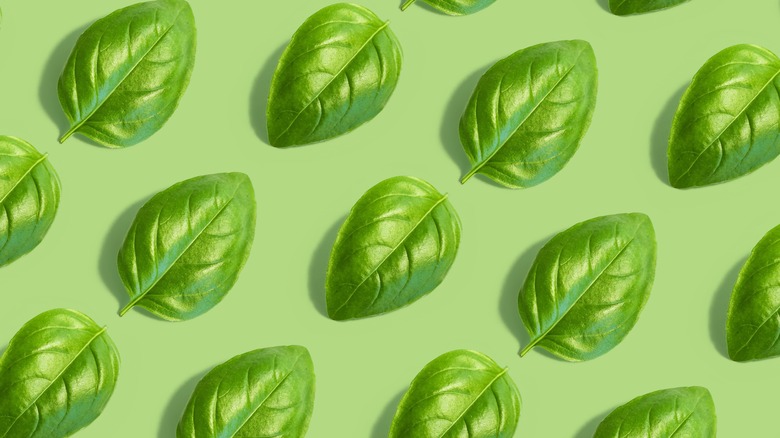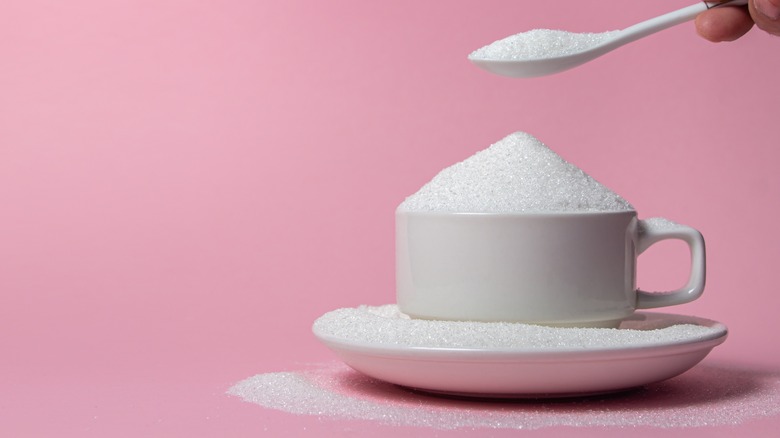A Sweet Way To Use Up Your Extra Basil
Basil thrives during the summer season, which could explain why your herb garden is producing an incredible amount of the herb. It may also explain that fragrant aroma in the produce aisle at your supermarket. Rather than put all that basil to use in a velvety pesto recipe, you can use those leaves to make a sweet treat. Intrigued? Keep reading.
First things first, wilted basil is a problem, which is why you should learn how to take care of the freshly picked (or purchased) herb. After rinsing the leaves, Bon Appétit recommends that you wrap them in a paper towel and refrigerate them in a resealable container — or you can trim the bottom stems and keep basil in a glass of water (as if they were glossy green flowers) until they're ready for use.
Given that basil is actually a member of the mint family, MasterClass explains that the herb can impart stunningly sweet and savory notes that range from licorice all the way to black pepper. While pizza, salad, and stir-frys are some of the main dishes you might already be using the green stuff for, it could be time to take a sweeter approach.
Make candied basil leaves
Whether you have more basil than you know what to do with or if you're just looking to experiment, then it's time to try candying your leftover leaves. The only other ingredients you need are egg whites and sugar (preferably superfine) for a more dazzling finish.
The process is easy. Martha Stewart advises brushing basil leaves with egg whites before dusting them with sugar and letting them harden for an hour — it's that simple. If you want a more stained glass effect, America's Test Kitchen instead suggests spraying leaves with vegetable oil, sprinkling them with sugar, and then popping them into the microwave for 90 seconds.
While candied basil can be a treat on its own, In Jennie's Kitchen recommends thinking of these shimmering leaves as a garnish to dress up cocktails and cakes. Taking the place of edible flower petals, sugared basil leaves can also be used to top ice cream, parfaits, fruit salads, or even add some extra vibrancy to a sweet-meets-savory recipe like strawberry and goat cheese crostini.

